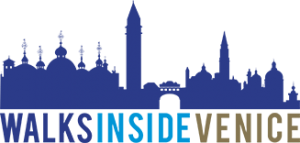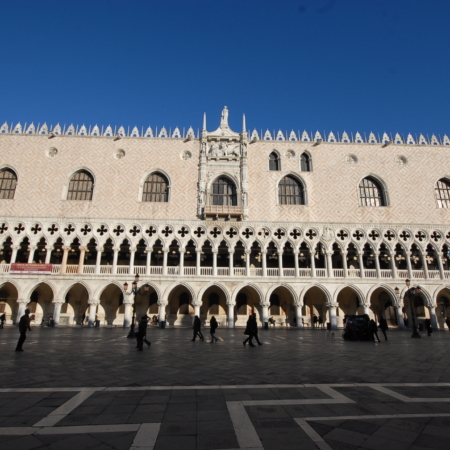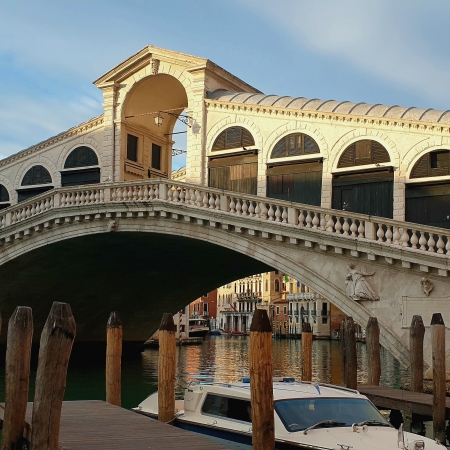VENICE FOR BEGINNERS: YOUR FIRST WALK IN TOWN
If you are a first-time visitor to Venice, the best approach is an introductory tour.
Our excursion begins with a selection of the “must-sees,” including St. Mark’s Square, the former political center of the Venetian Republic.
The Square contains many famous buildings: Doges’ Palace, Bridge of Sighs, Marciana Library, Bell Tower, Clock Tower, and more.
Using our priority access line when available, we shall enter St. Mark’s Basilica, a 900-year-old marvel of architecture.
The Church is unique in Italy for its golden Byzantine and Medieval mosaics, its intricate stone and marble traceries and exuberant Middle Eastern domes.
Venice for Beginners continues with a pleasant stroll into lesser-known areas, with the intent of showing you as much as possible of this enchanting city even if your time is limited.
After our visit to St Mark’s, staying away from the crowds, we shall walk through backstreets. bridges and squares to explore the city’s layout: you will be cocooned by the silence and intimacy that only a car-free city built to human scale can provide.
You will learn to get oriented in this maze-like city, how it feels to live in
a place like this, and how today’s administrators deal with the maintenance of their huge and fragile heritage.
We’ll end our visit in the busy neighborhood of Rialto, once the trade center of Venice. We shall cross the famous Bridge, the oldest over the Grand Canal, and explore the bustling surroundings of the best fresh produce market in the city.
HIGHLIGHTS
- St Mark’s Square overview of all buidings with historical intro
- St Mark’s Basilica (skipping the line)
- Santa Maria Formosa Square
- SS. Giovanni e Paolo Square
- Rialto area
- a walk off the beaten track
MORE ABOUT
THIS TOUR
VENICE FOR BEGINNERS
Embraced by the waters of its meandering canals, mirrored in a kaleidoscope of reflections, the palaces, houses, and churches of Venice are ever-present witnesses to the once-powerful town’s uniqueness, which continues to haunt the collective imagination of the entire world.
Venice is a city in northeastern Italy, set in the middle of a 212 square miles salt lagoon adjacent to the Adriatic Sea.
The city’s foundation was laid on several flat mud islands by refugees fleeing the barbarian invasions approximately 1300 years ago.
DRESS CODE AND ADVICE
- Short sleeves and kneee high pants and skirts are ok
- No sleeveless and no shorts/skirts above the knee
- Better if you don’t bring any backpack with you.
- During Sunday morning Mass and other Catholic Holidays there will be no access to St Mark’s Basilica
COST
- This tour lasts three hours and costs 330 euros up to six people (not per person), only private parties. For larger parties send us an email!
- Admission fees per person:
- St.Mark’s Basilica: 7 euros















